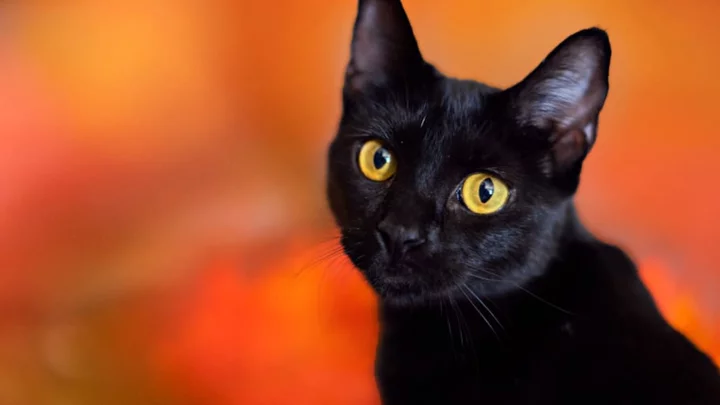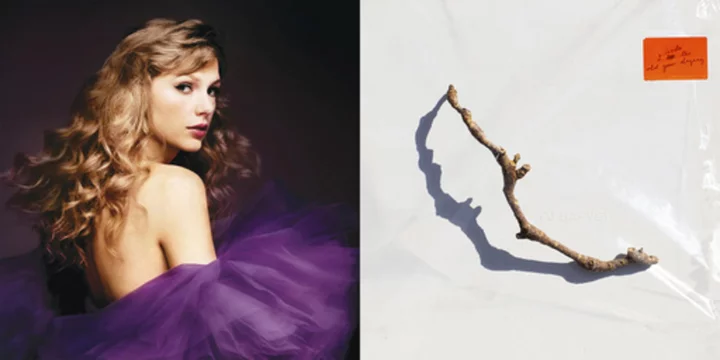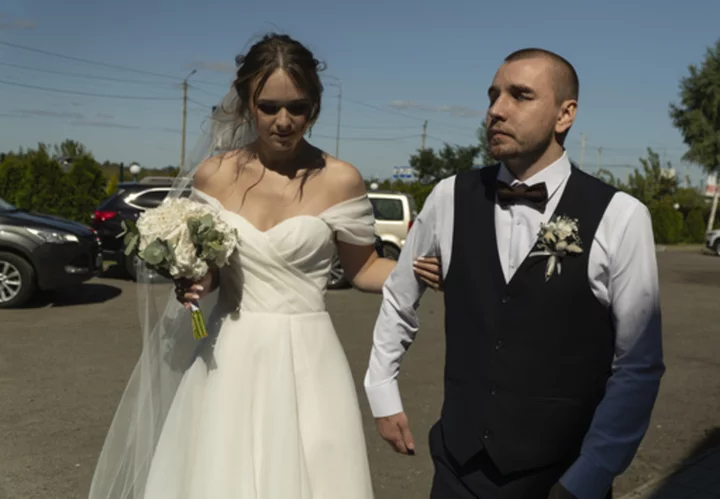No feline is more maligned than the black cat. At best, they’re bemoaned as lackluster photography subjects; at worst, they’re seen as harbingers of really bad luck.
But there’s a lot to love about these furballs, as evidenced by the holidays in their honor (the ASPCA celebrates Black Cat Appreciation Day annually on August 17, and National Black Cat Day occurs on October 27) . Read on for more interesting facts about the spookiest kitties of them all.
1. In some cultures, black cats are good luck.
They may have a less-than-stellar reputation in some areas of the world, but there are plenty of places where black cats aren’t bad luck at all. If you’re a single woman in Japan, owning a black cat is said to increase your number of suitors; if you’re in Germany and one crosses your path from left to right, good things are said to be on the horizon.
If a mysterious black cat shows up on your porch in Scotland, it’s said to foretell of imminent prosperity. And in France, people long believed that if you encountered one at a crossroads where five roads intersect, the four-legged wanderer would lead you straight to a treasure.
2. Black cats are a sailor’s best friend.
Not only were cats welcome aboard British vessels to hunt mice, but sailors generally thought a black cat in particular would bring good luck and ensure a safe return home. A few of these kitties have been enshrined in maritime history, like Tiddles, who traveled more than 30,000 miles during his time with the Royal Navy. (His favorite pastime was playing with the capstan’s bell-rope.)
3. There is no one black cat breed.
The Cat Fanciers’ Association (CFA) recognizes 22 different breeds that can have solid black coats—including the Norwegian Forest Cat, Japanese Bobtail, and Scottish Fold—but the Bombay breed is what most people picture: a copper-eyed, all-black shorthair.
The resemblance to a “black panther” (more on those animals in a bit) is no coincidence. In the 1950s, a woman named Nikki Horner was so enamored with how panthers looked that she bred what we now refer to as the Bombay.
4. Black cats are as easily adopted as cats of other colors ...
It’s common to think that black cats in shelters are the last in line to find their forever homes. Although black cats have been euthanized at higher rates in shelters compared to other colors, the ASPCA has found the total number of black cat adoptions was among the highest as well, possibly because black cats were simply more numerous than other colors. However, it can take longer to have them adopted because the bad luck myth persists.
5. ... Except maybe not during Halloween season.
Given their association with witches and the occult, you might think that black cat adoptions surge around Halloween. However, experts say not to so much—in fact, they tend to decline.
While rumors of animal sacrifices occurring on or around the holiday have been common for years (and have been largely debunked), they have prompted some animal shelters to ban black cat adoptions during October. Others are just reticent because they want to make sure you see your new pet as more than just a costume accessory.
6. A black cat’s coat can “rust” and have patterns.
A black cat’s color all boils down to a genetic quirk. There are three variants of the black fur gene (for solid black, brown, and cinnamon coats), and the hue works in conjunction with the pattern. If a cat has a solid black hue, but also the dominant tabby stripe gene, heavy exposure to the sun can make the black pigment in its fur break down to reveal its once-invisible stripes (another potential cause: nutritional deficiency). What was once a black cat is now a rusty brown cat.
7. Black cats share this patterned trait with “black panthers.”
If you scope out a black cat in the sunlight, you might see light patterns in their fur. This all comes down to a feline’s genetics, but it is a trait they share with black panthers, which is a term generally used to describe any big black cat. What we call “black panthers” are in fact melanistic jaguars or leopards and yes, they have patterns, too—spots, to be exact.
This is because their hair shafts produce too much melanin thanks to a mutation in their agouti gene, which is responsible for distributing pigment in an animal’s fur. Look carefully, and you can see a panther’s spots as the sunlight hits them in just the right way.
8. The gene associated with black fur might make these felines resistant to disease.
Even though their coloring is what gives them a bad reputation, black cats may be getting the last laugh after all. The mutation that causes a cat’s fur to be black is in the same genetic family as genes known to give humans resistance to diseases like HIV. Some scientists think the color of these cats may have less to do with camouflage and more to do with disease resistance. They’re hoping that as more cat genomes are mapped, we may get a step closer to curing HIV.
9. You can visit a cat café devoted to black cats.
Step through the doors of Nekobiyaka in Himeji, Japan, and get ready for your wildest cat lady dreams to come true. Black cats are the stars of this café and visitors are invited to pet (but not pick up) these lithe felines. Each of Nekobiyaka’s identical-looking black cats wears a different colored bandana to resolve any catastrophic mix-ups.
10. Black cats are difficult to photograph—but it can be done.
The modern-day conundrum black cat owners face isn’t bad luck, but bad lighting. In a world filled with people sharing photos of their pets on Instagram, black cats can end up looking like a dark blob in photos.
One photographer’s advice? Minimalist backgrounds, so your subject can stand out, and angling them toward natural light sources (but keep them out of bright sunlight!). If you’re snapping pics on your iPhone, tap on your cat’s face, then use the sun icon to brighten up the photo.
This article originally ran in 2016; it has been updated for 2023.
This article was originally published on www.mentalfloss.com as 10 Facts About Black Cats.









